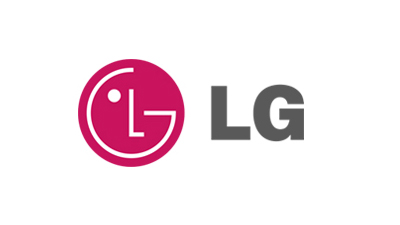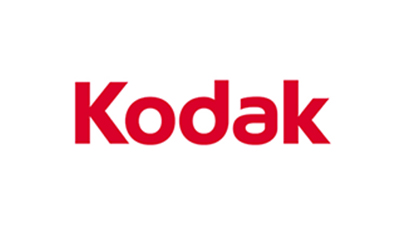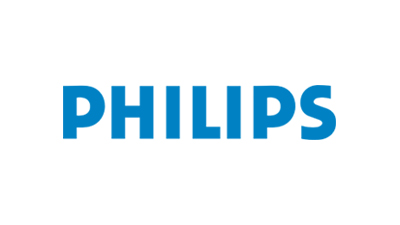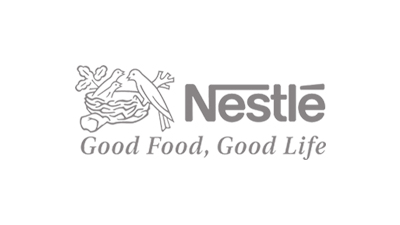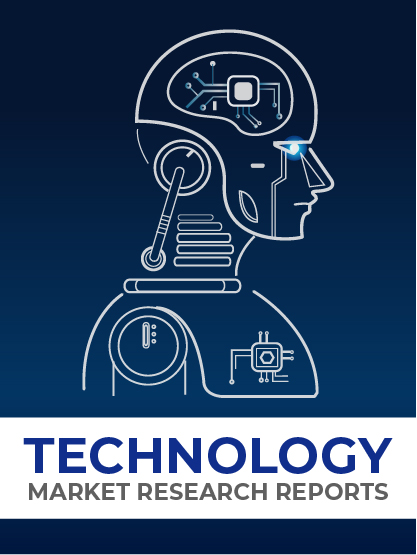
-
Report ID 138327 -
Published Date Sept. 2024 -
Delivery Format PDF/PPT/Word -
Editor's Rating
-
Report Details
Report Overview
The Global Generative AI in Organizational Collaboration Market size is expected to be worth around USD 36.0 Billion By 2033, from USD 4.5 Billion in 2023, growing at a CAGR of 23.1% during the forecast period from 2024 to 2033. North America dominated a 39.7% market share in 2023 and held USD 1.78 Billion in revenue from the Generative AI in Organizational Collaboration Market.
Generative AI in organizational collaboration refers to the use of artificial intelligence technologies that generate new content, solutions, or data within a collaborative work environment. This AI capability enhances decision-making, automates routine tasks, and fosters innovation by generating and refining ideas based on input from team members.
The market for Generative AI in organizational collaboration is expanding as companies seek more efficient ways to innovate and streamline communication across teams. Growth factors include the increasing demand for automation of repetitive tasks and the need for enhanced decision-making processes. Moreover, the integration of AI in remote work tools has become crucial due to the rise in virtual workplaces.
Top opportunities in this market lie in developing AI tools that seamlessly integrate with existing collaboration platforms to enhance user engagement and productivity, and in creating solutions that adapt to various industry-specific needs, ensuring wider adoption.
The Generative AI in Organizational Collaboration market is poised for transformative growth, driven by strategic funding initiatives and a focus on responsible development. A significant catalyst in this burgeoning field is the Omidyar Network’s commitment of an initial $30 million. This investment is particularly geared toward fostering the responsible evolution of generative
AI technologies. By bridging the gaps among industry players, civil society, and policymakers, the funding aims to cultivate a more inclusive AI infrastructure. Such efforts underscore the critical need for diverse stakeholder engagement in AI governance, ensuring that generative AI development aligns with broader societal needs and ethical standards.
Moreover, Google.org’s launch of the Accelerator: Generative AI program injects over $20 million into the ecosystem, targeting nonprofits that leverage AI for high-impact applications. This initiative not only offers financial backing but also provides essential resources like technical training, mentorship, and pro bono support, focusing on pivotal sectors such as climate change, health, and education.
These concerted efforts by leading organizations to support and guide the development of generative AI underscore its potential to revolutionize how businesses foster collaboration, innovate, and solve complex challenges.
Collectively, these investments reflect a strategic and thoughtful approach to scaling generative AI technologies in a manner that prioritizes ethical considerations and societal benefit. As these technologies integrate deeper into organizational frameworks, they promise to enhance decision-making processes, streamline operations, and foster more dynamic, innovative collaborative environments.
Key Takeaways
- The Global Generative AI in Organizational Collaboration Market size is expected to be worth around USD 36.0 Billion By 2033, from USD 4.5 Billion in 2023, growing at a CAGR of 23.1% during the forecast period from 2024 to 2033.
- In 2023, Solution held a dominant market position in the By Component segment of Generative AI in Organizational collaboration, capturing more than a 68.7% share.
- In 2023, Cloud-Based held a dominant market position in the By Deployment Mode segment of Generative AI in Organizational collaboration, capturing more than a 72.5% share.
- In 2023, Large Enterprises held a dominant market position in the By Organization Size segment of Generative AI in Organizational collaboration, capturing more than a 64.0% share.
- North America dominated a 39.7% market share in 2023 and held USD 1.78 Billion in revenue of the Generative AI in Organizational Collaboration Market.
By Component Analysis
In 2023, Solution held a dominant market position in the By Component segment of Generative AI in Organizational Collaboration, capturing more than a 68.7% share. This substantial market share underscores the crucial role that integrated solutions play in enhancing collaborative workflows through advanced AI technologies. These solutions typically include software platforms that leverage generative AI to automate and optimize various collaborative tasks, thus driving efficiency and innovation within organizations.
On the other hand, Services associated with generative AI in organizational collaboration, though smaller in comparison, still play a vital role in the ecosystem. These services, which accounted for the remainder of the market share, include consultation, implementation, and ongoing support, helping businesses tailor AI solutions to their specific needs. As organizations increasingly recognize the value of these services to fully leverage AI capabilities for improved collaboration, this segment is expected to grow.
The significant lead of the Solution segment highlights the current market preference for comprehensive, ready-to-deploy AI tools that promise immediate enhancement of collaborative processes, whereas the Services segment represents a growing opportunity for businesses to differentiate through customized AI integration.
By Deployment Mode Analysis
In 2023, Cloud-Based deployment held a dominant market position in the By Deployment Mode segment of Generative AI in Organizational Collaboration, capturing more than a 72.5% share. This preference for cloud-based solutions underscores the flexibility, scalability, and cost-efficiency they offer, making them particularly appealing to organizations looking to harness the power of generative AI without substantial upfront investments in infrastructure.
Small and Medium-Sized Enterprises (SMEs) and Large Enterprises both increasingly rely on cloud-based platforms to facilitate seamless collaboration across diverse geographic locations. The cloud enables these enterprises to deploy generative AI tools swiftly, ensuring real-time collaboration and innovation. For SMEs, the lower entry costs and minimal IT overhead make cloud solutions especially attractive, allowing them to compete on a more level playing field with larger counterparts.
Large Enterprises benefit from the cloud’s scalability, which supports their extensive operational needs and dynamic market demands. As more businesses recognize the strategic advantages of cloud-based generative AI, this segment’s dominance is likely to continue, reflecting a broader shift towards more agile and responsive organizational structures in the digital age.
By Organization Size Analysis
In 2023, Large Enterprises held a dominant market position in the By Organization Size segment of Generative AI in Organizational Collaboration, capturing more than a 64.0% share. This substantial market share reflects the significant investment and integration of generative AI technologies by large organizations across various sectors to enhance productivity, foster innovation, and streamline collaboration.
Key industries driving this adoption include IT and Telecommunications, which leverage AI to manage complex networks and customer interactions; BFSI, where AI enhances security, personalizes services, and manages vast amounts of financial data; and Healthcare, where it supports personalized medicine and operational efficiency. Manufacturing, Retail, and Education sectors also significantly contribute to the growth by utilizing AI for optimizing supply chains, improving customer experiences, and personalizing learning paths, respectively.
Government and Public Sector entities are increasingly adopting these technologies to improve service delivery and engage with citizens more effectively, underscoring the broad applicability of generative AI across diverse fields. The continued dominance of large enterprises in this market segment is likely supported by their capacity to invest in cutting-edge technologies that drive significant returns on investment, positioning them at the forefront of digital transformation initiatives.
Key Market Segments
By Component
- Solution
- Services
By Deployment Mode
- Cloud-Based
- On-Premise
By Organization Size
- Small and Medium-Sized Enterprises
- Large Enterprises
By Industry Vertical
- IT and Telecommunications
- BFSI
- Healthcare
- Manufacturing
- Retail
- Education
- Government and Public Sector
- Other Industry Verticals
Drivers
Boosting Efficiency with Generative AI
Generative AI is revolutionizing organizational collaboration by enhancing efficiency and creativity. As a catalyst for streamlined communication, it enables real-time language translation and data interpretation, bridging gaps between global teams.
This AI form also automates routine tasks, such as scheduling and email management, freeing up employees for more complex projects. Moreover, generating rich content like reports and presentations assists teams in decision-making and project development.
The integration of generative AI tools into collaboration platforms seamlessly merges AI’s analytical power with human ingenuity, fostering an environment where strategic planning and creative processes are significantly accelerated. This driver not only boosts productivity but also enhances the quality of collaborative efforts across diverse business environments.
Restraint
Hurdles in AI Implementation
The integration of generative AI into organizational collaboration faces significant hurdles, primarily due to concerns about data privacy and security. Companies are cautious, as these AI systems require access to vast amounts of sensitive information to operate effectively, raising fears of data breaches or misuse.
Moreover, the complexity of AI technology can be daunting for non-technical staff, necessitating extensive training that many businesses find costly and time-consuming. There’s also a challenge in ensuring that AI-generated content aligns with company policies and maintains the human touch needed in many business interactions.
These issues not only slow down the adoption of generative AI but also restrict its potential impact, as organizations must balance innovation with risk management and regulatory compliance.
Opportunities
Expanding AI Collaboration Frontiers
Generative AI presents expansive opportunities for organizational collaboration, particularly through personalized communication tools and smart automation. This technology can tailor interactions based on individual team members’ preferences and work habits, enhancing engagement and efficiency.
By automating mundane tasks, AI allows teams to focus on more strategic activities, thereby increasing productivity. Additionally, AI’s capability to analyze large datasets quickly means that it can offer insights and generate solutions at an unprecedented speed, helping businesses to make informed decisions faster.
As remote work becomes more common, AI-driven collaboration tools are also essential in managing distributed teams, ensuring that everyone, regardless of location, is synchronized and contributing effectively. This adaptability and improvement in workflow open up new avenues for businesses to innovate and grow in a competitive market landscape.
Challenges
Navigating AI Collaboration Complexities
Implementing generative AI in organizational collaboration presents several challenges that can hinder its effectiveness. One major issue is the integration of AI with existing systems, which often requires substantial technological upgrades and can lead to compatibility problems.
Furthermore, there is a persistent concern about the ethical implications of using AI, such as potential biases in AI-generated content that could affect decision-making processes. Ensuring the AI systems operate transparently and accountably is another hurdle, as there’s a need for clear guidelines on how AI decisions are made.
Additionally, maintaining the human element in communications is challenging as reliance on AI increases, which could impact team dynamics and employee satisfaction. Overcoming these challenges requires careful planning, ongoing training, and a balanced approach to technology adoption in the workplace.
Growth Factors
Generative AI Fuels Collaboration Growth
Generative AI significantly drives growth in organizational collaboration by enabling seamless, efficient, and innovative communication and workflow management. This technology’s ability to quickly generate and refine documents, presentations, and emails based on specific user inputs allows teams to save time and focus on higher-level strategic tasks.
Additionally, AI-enhanced tools can facilitate better project management through predictive analytics and trend analysis, providing teams with insights that help anticipate project outcomes and plan accordingly. The rapid evolution of AI technologies also ensures continuous improvement in these tools, making them more accurate and user-friendly over time.
As businesses increasingly operate on a global scale, the demand for such advanced tools that can overcome language and cultural barriers will continue to propel market growth, making collaboration more dynamic and accessible across diverse geographies.
Emerging Trends
AI Trends Transforming Workplaces
Emerging trends in generative AI are transforming organizational collaboration by introducing advanced automation and real-time data analysis. One key trend is the development of AI-driven virtual assistants that manage scheduling, emails, and task coordination, allowing teams to focus on complex problem-solving and innovation.
Another trend is the use of AI for real-time sentiment analysis during virtual meetings, enhancing communication by providing immediate feedback on participant engagement and emotional responses. Additionally, generative AI is being used to create highly customized learning and development programs that adapt to individual employee needs, promoting skill growth aligned with organizational goals.
These trends indicate a shift towards more adaptive, responsive, and personalized collaboration environments, driven by AI’s ability to understand and predict human behaviors and preferences in the workplace.
Regional Analysis
In the Generative AI in Organizational Collaboration market, regional dynamics showcase significant variations in adoption and integration. North America dominates with a substantial market share of 39.7%, valuing approximately USD 1.78 billion. This leadership stems from the region’s robust technological infrastructure, a strong presence of leading AI firms, and significant investments in AI research and enterprise solutions.
In contrast, Europe follows with a strong emphasis on regulatory compliance and data privacy, fostering a cautious yet growing deployment of AI technologies within organizational frameworks.
The Asia Pacific region is witnessing rapid growth due to increasing digital transformation initiatives and expanding corporate sectors in countries like China, India, and Japan. This region is poised for substantial market penetration as businesses seek AI-driven efficiencies to compete on a global scale.
Meanwhile, the Middle East & Africa, and Latin America are emerging as potential growth areas, driven by digital modernization in the corporate sector and increasing awareness about AI benefits. These regions, although currently smaller in market size, display significant potential for adoption due to evolving technological landscapes and increasing foreign investments.
Key Regions and Countries
- North America
- US
- Canada
- Europe
- Germany
- France
- The UK
- Spain
- Italy
- Rest of Europe
- Asia Pacific
- China
- Japan
- South Korea
- India
- Australia
- Rest of APAC
- Latin America
- Brazil
- Mexico
- Rest of Latin America
- Middle East & Africa
- South Africa
- Saudi Arabia
- UAE
- Rest of MEA
Key Players Analysis
In 2023, Microsoft Corporation, Google LLC, and Salesforce, Inc. are pivotal players in the global Generative AI in Organizational Collaboration market, each bringing unique strengths to the forefront.
Microsoft Corporation leverages its extensive enterprise solutions ecosystem, integrating generative AI capabilities within Microsoft Teams and Office 365. This integration enhances user experiences by enabling more efficient communication, automated content generation, and advanced data analysis, positioning Microsoft as a crucial facilitator of workplace productivity.
Google LLC capitalizes on its advanced AI research and development. With tools like Google Workspace, which incorporates AI to streamline tasks such as email drafting and meeting scheduling, Google enhances collaborative efforts across various industries. Google’s AI-driven analytics and real-time collaboration tools help maintain its competitive edge by providing insights that drive decision-making and foster a more cohesive work environment.
Salesforce, Inc. introduces AI through its Einstein platform, which embeds AI capabilities directly into the customer relationship management (CRM) process. This integration helps organizations anticipate customer needs and automate responses, significantly improving engagement and operational efficiency in collaborative settings. Salesforce’s focus on customer-centric AI applications uniquely positions it to transform how organizations interact with their clients and manage internal collaboration.
Each company’s strategic focus on integrating AI into collaboration tools not only boosts its market standing but also significantly influences how organizations operate, communicate, and grow in the increasingly digital business landscape.
Top Key Players in the Market
- Microsoft Corporation
- Google LLC
- Salesforce, Inc.
- Adobe Inc.
- Cisco Systems, Inc.
- Atlassian Corporation
- Zoom Video Communications, Inc.
- Asana, Inc.
- Notion Labs, Inc.
- Other Key Players
Recent Developments
- In August 2023, Cisco Systems acquired a startup in August 2023, enhancing their WebEx suite with new AI features for better meeting collaboration.
- In July 2023, Atlassian Corporation unveiled a new AI service in July 2023 to streamline task management in Jira Software, enhancing team productivity by 20%.
- In June 2023, Adobe Inc. launched an AI-powered tool aimed at improving team creativity and project efficiency in Adobe Creative Cloud.
Report Scope
Report Features Description Market Value (2023) USD 4.5 Billion Forecast Revenue (2033) USD 36.0 Billion CAGR (2024-2033) 23.1% Base Year for Estimation 2023 Historic Period 2018-2023 Forecast Period 2024-2033 Report Coverage Revenue Forecast, Market Dynamics, Competitive Landscape, Recent Developments Segments Covered By Component(Solution, Services), By Deployment Mode(Cloud-Based, On-Premise), By Organization Size(Small and Medium-Sized Enterprises, Large Enterprises), By Industry Vertical(IT and Telecommunications, BFSI, Healthcare, Manufacturing, Retail, Education, Government and Public Sector, Other Industry Verticals) Regional Analysis North America – US, Canada; Europe – Germany, France, The UK, Spain, Italy, Rest of Europe; Asia Pacific – China, Japan, South Korea, India, Australia, Singapore, Rest of APAC; Latin America – Brazil, Mexico, Rest of Latin America; Middle East & Africa – South Africa, Saudi Arabia, UAE, Rest of MEA Competitive Landscape Microsoft Corporation, Google LLC, Salesforce, Inc., Adobe Inc., Cisco Systems, Inc., Atlassian Corporation, Zoom Video Communications, Inc., Asana, Inc., Notion Labs, Inc., Other Key Players Customization Scope Customization for segments, region/country-level will be provided. Moreover, additional customization can be done based on the requirements. Purchase Options We have three licenses to opt for: Single User License, Multi-User License (Up to 5 Users), Corporate Use License (Unlimited User and Printable PDF) -
Table Of Content
Research Insights & Deliverables
 Development and Future Forecast
Development and Future Forecast Competitive benchmarking
Competitive benchmarking Company Revenue Statistics
Company Revenue Statistics Rising Regional Opportunities
Rising Regional Opportunities Technology Trends and Dynamics
Technology Trends and Dynamics Technology Assessment
Technology Assessment
-
Inquiry Before Buying
Research Insights & Deliverables
 Development and Future Forecast
Development and Future Forecast Competitive benchmarking
Competitive benchmarking Company Revenue Statistics
Company Revenue Statistics Rising Regional Opportunities
Rising Regional Opportunities Technology Trends and Dynamics
Technology Trends and Dynamics Technology Assessment
Technology Assessment
-
Request Sample
Research Insights & Deliverables
 Development and Future Forecast
Development and Future Forecast Competitive benchmarking
Competitive benchmarking Company Revenue Statistics
Company Revenue Statistics Rising Regional Opportunities
Rising Regional Opportunities Technology Trends and Dynamics
Technology Trends and Dynamics Technology Assessment
Technology Assessment
